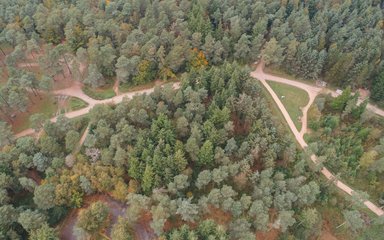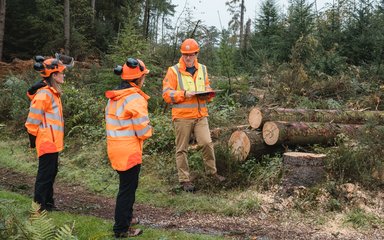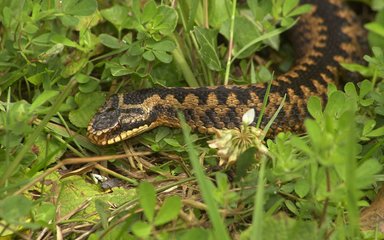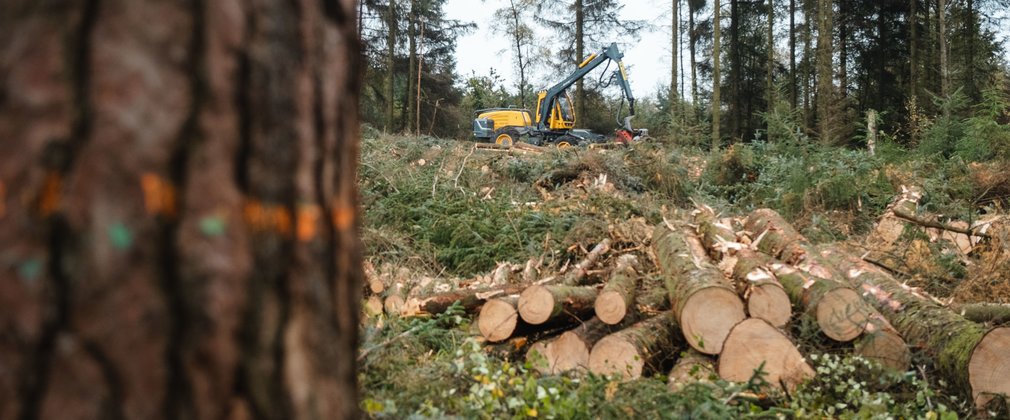Modern forests are the result of centuries of human management. There is a common misconception that forests and natural spaces do better left to their own devices. In fact, well managed forests are more productive, more resilient to our changing climate, they support more wildlife, and they are more accessible for people to enjoy.
Our sustainable approach to forest management is guided by the UK Woodland Assurance Standard (UKWAS). This sets out a range of principles to ensure that our management is meeting the highest standards of timber production, habitat management, conservation of historical and cultural features, and recreation access. Through UKWAS, we are proud to be certified to the Forest Stewardship Council® (FSC®) and the Programme for the Endorsement of Forest Certification (PEFC) standards.

History of Haldon Forest
Haldon Forest Park sits at the heart of Haldon Forest which straddles the Haldon Hills, an area of fascinating geology which dates back more than 360 million years. The Haldon Hills have a long history of human presence, from Neolithic occupation to 19th century mineral mining. The hills beneath Haldon Forest were previously covered by heathland while the lower slopes featured more trees, which were managed for coppice.
Like most of the nation’s woodlands, Haldon Forest is a working landscapes, heavily influenced by people. Human intervention has shaped the nation’s forests we know and love today, through tree management for timber and wood products, grazing livestock, mining, and traditional practices such as charcoal making and coppice.
Forestry England is born
During the First World War, the UK’s timber reserves were severely depleted. This led to the creation of the Forestry Commission in 1919, to increase woodland cover and create timber reserves for the future. During the 20th century, the Forestry Commission gradually bought and planted land across the Haldon Hills until the forest totalled over 1,200 hectares. Now managed by Forestry England, Haldon Forest continues to produce high quality, sustainable timber, as well as providing vibrant wildlife habitats, supporting several businesses, and welcoming around half a million visitors each year.
Trees and timber at Haldon
Haldon Forest has been a working timber plantation for around 100 years. As trees grow, they absorb carbon dioxide from the atmosphere. When a tree is cut down, that carbon is locked away for as long as the wood is used. As we fell trees, we replant – making wood a sustainable and renewable material. Wood is not only an alternative to materials like plastic and concrete, but it uses less energy to produce and process. The UK currently imports about 80% of the timber we use, so home grown timber is good for the economy.
Modern forest management
Since the creation of Haldon Forest in the aftermath of the First World War, our management has continuously evolved to meet the needs of the forest, people, and wildlife. Our daily work is guided by a 10-year forest plan that sets out our vision for the forest and the steps we will take to achieve it. This includes where we need to thin out young trees to give them more space and light to grow to their potential, and where mature trees are ready to be clear felled.
The forest plan also describes what we will do after tree felling, such as planting new trees or creating new habitat, how we will manage habitats for species such as butterflies, and how we will protect and enhance historic features and designated monuments. There is much more to forest management than trees.


Haldon's habitats for wildlife
Haldon Forest is a mosaic of important habitats for mammals, reptiles, birds, and lepidoptera (butterflies and moths). Most of Haldon Forest is designated a Site of Special Scientific (SSSI) interest because of the rare lowland heath habitat on the Haldon Hills, the presence of certain rare butterflies, and the migrant population of breeding nightjar that visits every summer.
In some key heathland areas, when we fell the mature trees we are managing the spaces to encourage their native characteristics to return. This will take several years to manage unwanted plants, such as bramble, to let heathland plants return, such as heather. Over time, this will provide more important habitat for scarce species, such as adder, and more nesting opportunities for nightjar.
What does the future look like for Haldon Forest?
The climate emergency is bringing new challenges such as severe weather events, pests, and diseases that threaten the forest. These are threatening the future of our forests, including Haldon Forest, but we are working to secure their future.
Haldon Forest often experiences strong winds which can blow trees down. In 2014, a severe storm blew down around 80 hectares of trees overnight. We won’t always be able to prevent this but we can change the way we structure the forest to help trees withstand weather events. We are also increasing the range of tree species that we plant in the forest. We particularly consider species that are resilient against current diseases and pests, such as Phytophthora ramorum and grey squirrel. We are also working with experts around the world so use tree seeds from regions where current climate conditions are similar to the expected future climate in England. Using tree seeds from those areas means that the trees are more likely to survive the warm and dry climate we expect in the future.
Haldon Forest also plays an important role in the climate emergency. For every tonne of wood grown, about 1 cubic tonne of carbon dioxide is removed from the atmosphere. The trees in Haldon Forest lock up nearly 5000 tonnes of carbon in their wood every year, which is vital to support the fight against climate change.

